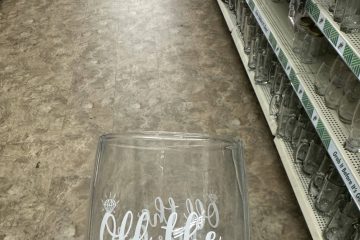
Walking past your loved ones for the very first time as a married couple is a special and poignant moment on any wedding day. And, while your hair and makeup stylists might not thank you for it, tradition dictates the guests are allowed to shower you with confetti, creating some wonderful photo opportunities.
The problem is that traditional confetti is often made from materials that aren’t very sustainable or eco-friendly, such as colored paper or even metallic-coated material. Fortunately, as the awareness of the importance of sustainability at weddings grows, many natural alternatives are becoming available.
In this guide, we explore the benefits of using sustainable confetti and the options that are available.

The benefits of using sustainable confetti
No need to clean up
Sustainable confetti is designed to biodegrade over time, meaning there’s no need to go through the painstaking process of cleaning up tiny shreds of confetti after the big day. However, it’s important to consider your chosen venue, as some may not permit confetti if it can’t be easily removed before their next wedding.
Harmless to wildlife
Traditional shiny confetti can be attractive to animals, causing them to use it for nests or even ingest it. This can be harmful to their natural ecosystem, so it’s much better to use eco-friendly alternatives that blend in instead. Some of the sustainable confetti options can even give back to the surrounding environment, such as flower petals which can act as food for small animals and insects in the area.
Reduced waste
The confetti that is picked up or left unused can easily be composted, meaning there’s virtually no waste generated. Whereas with traditional confetti, it can be almost impossible to recycle such tiny shreds of material, and that’s if they’re even made from materials that can be recycled.

Different types of sustainable confetti
Rice
Rice is a popular choice for confetti, as it’s thought to symbolize fertility and prosperity. It’s also a great option where sustainability is concerned, as it will naturally break down over time. However, excessive amounts of rice can actually become a slipping hazard, so you may still need to clean up after the celebration.
Flower petals
Dried or fresh flower petals are an excellent choice for confetti. Providing all the bright colors without the environmental impact, flower petals will naturally degrade in almost any environment. To go one step further, try to source your flower petals as locally as possible, ensuring that they don’t contribute to carbon emissions along their journey.
Seed paper
For a more traditional confetti option, consider using seed paper. This kind of confetti is made from recycled paper fibers that are stuffed with seeds, meaning it can encourage the growth of flowers once they find their resting place on the ground. Again, this is an option you’ll need to take your venue into account for, as established venues may not want flowers to pop up after your day is over.



